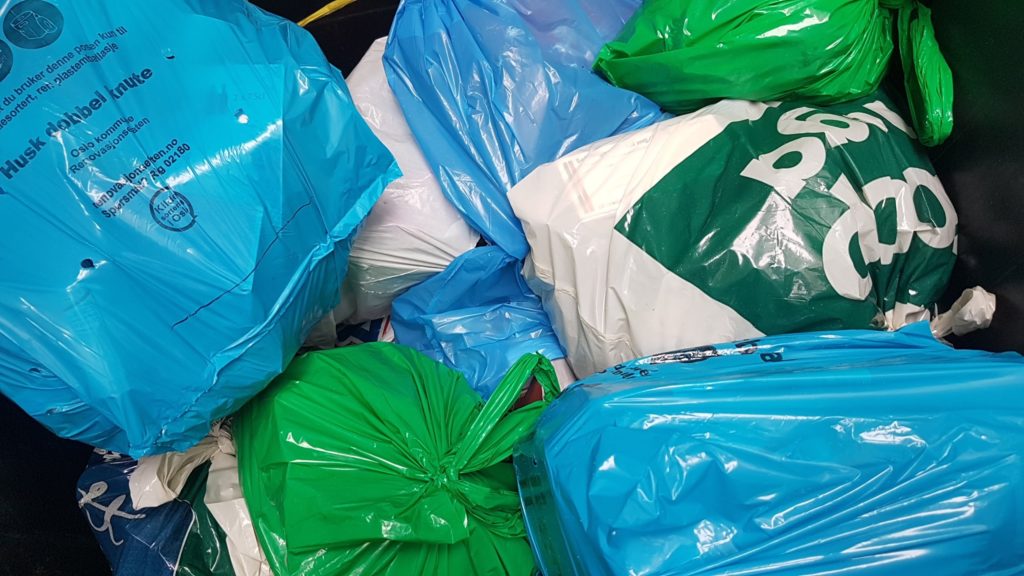
The main aim of this study was to gain knowledge on occupational exposure to dust, endotoxins, and microorganisms at modern automated waste sorting plants compared to the exposure in more traditional, manual waste sorting plants.
– We studied occupational exposure to bioaerosols in sorting plants that use optical sorting machines in comparison to traditional plants where waste is mostly moved by excavators or manual force, says Elke Eriksen, research fellow at STAMI and the study’s first author.
Another aim of the study was to identify high exposure work operations and work areas within the waste sorting plants. The researchers also wanted to investigate the relationship between occupational exposure and self-reported health data.
High exposure
Previous studies in waste sorting plants have revealed that exposure levels to dust, endotoxins and fungal particles can be generally high in these environments.
Endotoxins are a type of bacteria-produced toxin that is found on the bacterial cell wall and is released when the bacterium dies and disintegrates.
– The present study showed that dust levels were generally below the current occupational exposure limit for organic dust. However, we found that exposure levels to microbial components, such as endotoxins and fungal particles, were relatively high and varied substantially both between automated and manual waste sorting plants, and between seasons. The exposure levels were also dependent on the task performed by the employee, which explains the large variation in exposure levels between waste workers within one plant, Eriksen explains.
Respiratory health effects
In addition, the researchers found higher levels of fungal fragments and fungal spores in the automated waste sorting plants than in those with more manual operations.
– The airborne fungal particles were dominated by fragments with higher inflammatory potential than fungal spores, which are usually counted to assess the fungal burden in work air, Eriksen says.
The researchers also collected data on the worker’s health, focusing on respiratory health.
– When we compared data from exposed employees with data from those who were not particulary exposed, we found that exposed workers were significantly more likely to suffer from certain symptoms, such as sneezing, congested nose and runny nose, Eriksen explains.
The symptoms from the nose correlated to exposure to high levels of submicronic fungal fragments.
Plants should be assessed individually
The research fellow says that as exposure levels may vary significantly between different work tasks within the same plant, as well as between seasons and plant types, it is important to assess each waste sorting plant individually. Exposure levels are also somewhat dependent on the type of waste coming in, the collection frequency of the waste and difference in pre-sorting routines.
– To obtain the most accurate picture of the exposure within a plant, measurements should be repeated, as exposure will vary from day to day in accordance with the types of waste coming in. For instance, a load of open or overfilled food-waste bags that spill their contents will cause a substantial build-up of organic material in the sorting lines, emphasises Eriksen.
Furthermore, it may be relevant to look at selected work tasks that are carried out regularly over short periods, to identify high exposure operations, such as cleaning of sorting machines with compressed air, which causes a general increase in airborne dust.
– Workers at high exposed workstations may benefit from the use of personal protective equipment to reduce personal exposure and potential exposure related health effects, Eriksen concludes.

